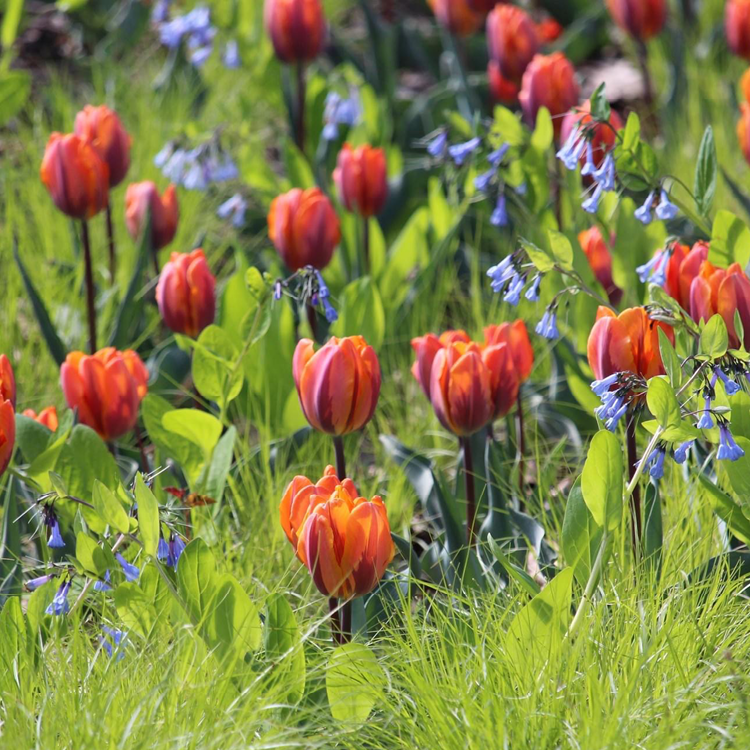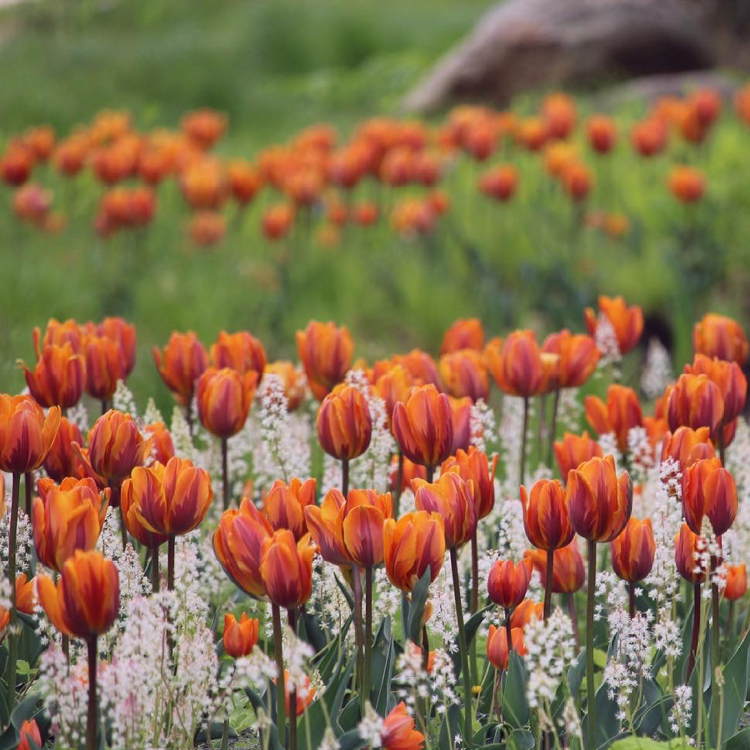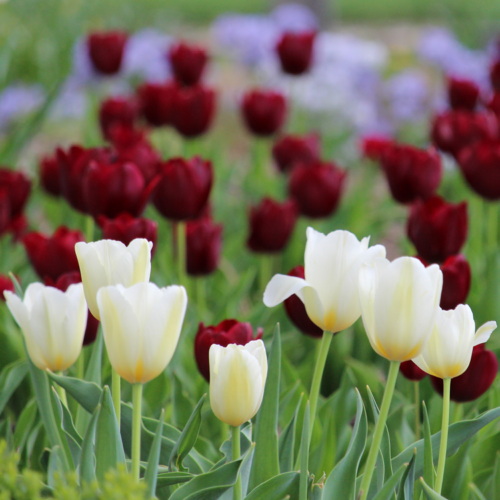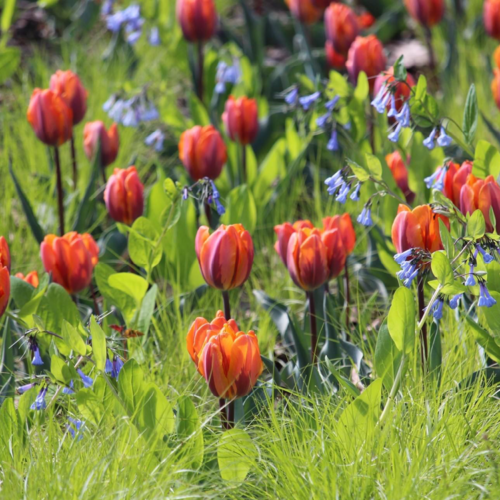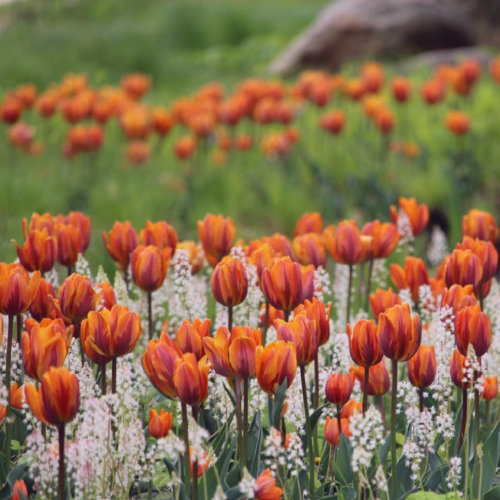Tulips are spring ephemeral plants with color dependent on the chosen selection. Most tulips prefer average to dry soil in sun or part sun making them well-suited for slopes and banks where they’ll grow up to two feet tall, though height is again dependent on the chosen selection. They should be interplanted with species that fill in the voids left once dormant in summer. Companion plants include Prairie Dropseed (Sporobolus heterolepis) and Echinacea purpurea (Purple Coneflower).
Maintenance
Plant tulip bulbs in the fall, ideally in October, to allow them time to establish roots while the ground is warm. Ensure soil is well-drained to avoid bulb rot. Post-bloom in May, deadhead to encourage energy to be directed towards bulb development. Do not cut back the foliage until it has yellowed and died naturally in early June.

